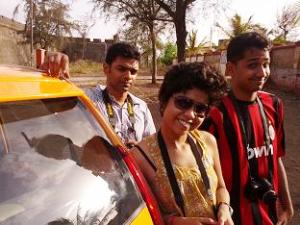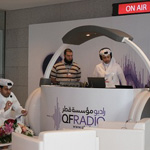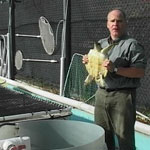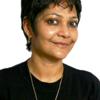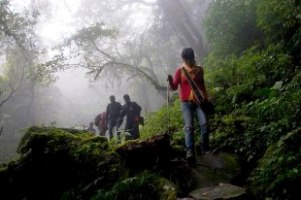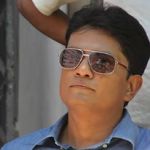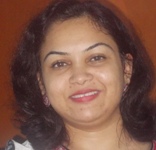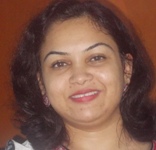Starting from the earliest of historians such as Fa-Hien and Hiuen Tsang, history, sociology and culture have been mapped through travel.
Acclaimed travel writer Pico Iyer's definition of travel is the most apt. He writes - "We travel, initially, to lose ourselves; and we travel, next, to find ourselves. We travel to open our hearts and eyes and learn more about the world than our newspapers will accommodate. We travel to bring what little we can, in our ignorance and knowledge, to those parts of the globe whose riches are differently dispersed. And we travel, in essence, to become young fools again -- to slow time down and get taken in, and fall in love once more" in his erudite article 'Why We Travel'.
Indeed, with every day of travel, we get to lose as well as find more about our own selves, wherever our travel might lead us to. One can then imagine the wide travesty of self-discovery along with discovery of this massive landscape called India that a more than 3,000 kilometers' road-trip could lead to.
It began with an innocuous phone call on an early May afternoon from an MTV producer. I was in the middle of writing one of my many academic papers due for submission when he called - "Shaheen, you're online audition has been selected and you are a part of the show".
For a few seconds, I stared blankly. I had chipped in a small audition tape for the show called "Drive with MTV" since it sounded exciting and it was all about travelling across country. I was going to be a participant of something touted as 'India's first social media show'.
The show sponsored by Tata had four teams comprising of four members each travelling across the country simultaneously in a Tata Nano. The teams were divided into four zones - North, South, East and West. I was part of the West Zone and had the cute Yellow Nano as my ride. We were to travel for 21 days across the zones. The idea was to have as much local interaction with people as possible and explore places.
Being a travel and adventure enthusiast and an academic researcher of television and the `televised image' - the show held double promise for me; travel and a deeper insight into the politics of the televised image. A sense of trepidation and excitement filled my heart and stomach. The night before the trip, I could not sleep. I had an early morning flight to Mumbai too. The thought of travelling in a close and an almost intimate space with three other people who were complete strangers, did seem intimidating. But the thought of going to places I had never visited was enough to dispel all anxiety.
After my Masters in the Jawaharlal Nehru University ended, I packed my bags and travel kit. And off I went to Mumbai for this exciting venture. We were accompanied by a team of producers. The eight of us kick-started the trip in the last week of May, all set to explore the country's Western zone. The show format was such that participants were not informed of the route. Only a day prior to the travel, the producers would tell us where to head. Our travel kits were loaded with stuff provided by e-Bay and so we were all geared up with camps, sleeping bags, army knives, essential medicines. In short, nothing to dampen or hamper us during the road trip.
The trip took me through to places that were exotic, places so far-off the map that I had not even heard of. From the usual suspects like the beautiful Mount Abu, to the exotic Udaipur, to the far flung Neemuch - it was a 3,400 kilometers of getting to know India like never before. From the developed highways across Gujarat, to the arid and bare landscape of Rajasthan, to the first feel of the monsoons in Madhya Pradesh - this trip was not just about exploring the country, but also a test of immense mental and physical endurance. A condition set was the tight control of the daily budget which was pre-decided by MTV. All the teams received a paltry budget of 4,000 rupees each day which included fuel for the car, food and accommodation for all four participants. The point was to spend as little as possible. The saved money would be counted as points later. Hence, there were stretches where we traveled across 44 degrees celsius heat across the dry and parched stretches of Gujarat and Rajasthan without the air-conditioning just to save fuel.
There were instances when I felt drained out due to the extreme adrenaline rush from adventure activities like rappelling, spelunking and camping outdoors. True, we indulged in typical touristy activities such as going for a boat ride in Lake Pichola in Udaipur or seeing folk dance performances. Yet, more than a geographical description of the places, I would like to make the ethnographic or the social experience as the pivot.
As a means to save money, one of the tools we used was social media interaction, which was in any case the point of the entire show, to reach out to people to help us with either food or accommodation or both. This was an enriching experience, since we could meet a wide gamut of people across spectrum. From a teetotaler but pot smoking design student to staying over in the house of a middle class joint family in the heart of Madhya Pradesh, I can safely say I got a bit of feel of the pulse that drives country's politics. We were fortunate to meet people who were hospitable towards us, but some of the perspectives I often heard of, did unfortunately turn to be true.
In Gujarat, a state that I had never been to before but one that I visited on this trip, many intellectuals I met discussed the sense of schism that has crept up in people's minds, especially in the recent past. One may say, it may be my paranoia, but I can assert that it was not so. I did sense and feel that polarization, given my identity. There was no overt hostility in any way, but even in MP, the subtle nuances of the people were enough for a journalistic and academic mind to feel it. A glaring example was an incident in a Gujarat city. We were turned away from a hotel after the manager saw my identity card and flung it on his desk. I do not intend to be unnecessarily negative about the people or the place, but it is important to be objective and not just sing paeans about my experience. After all, behavior does reflect in some way the political and social stance of that place.
Besides that, the rigours of a televised show, even if it is a show telecast through social media sites like YouTube, need to be critically analyzed. Any discourse on the telegenic reality of media image involves `problematics'. In a media dominated world, the spectacle of reality television induces 'sameness' in popular culture. This has taken an important turn in the discourse of television and the image. There is an interesting shift of on-air programming from television to the internet.
As Geoffrey Nowell-Smith clearly points out in his essay "On History and the Cinema" that television operates its powers at two levels - power of incorporation and power of spontaneity.
What the Indian media, and more so now the 24 hour news channels and channels with reality television programming have induced is a cultural sameness to the audience that society expects out of primetime news or reality shows. These shows have become a war of TRPs or Television Rating Points.
In contemporary times, cultural interaction is no longer the realm of a totally isolated group. The system of choosing the winner for this show may not have been through the usual methods of SMSs or calls, but through the number of 'likes' on the Facebook page or the number of video views on YouTube. It was a part of the creating a `hyper-real' through the mass media.
When mass media such as television are treated as part of a whole range of cultural products, as texts to be "read" according to interpretive strategies, we find that literary conventions and forms have greater socio-cultural significance than we think. Analysis of mass media enables us to see how we get fashioned by our interactions with what we read, watch and listen to.
We can use cultural theorist Stuart Hall's argument where he states popular culture is an arena of consent and resistance…partly where hegemony arises, and where it is secured. We understand popular culture as a site of struggle and not simply of domination. In a show format as such, the hegemony of a social media savvy people gets pandered to. Is this the new class of the viewing public? It certainly looks now. Hence, the need for a more sound discourse on the shift of medium and the audience.
When mass media such as television are treated as part of a whole range of cultural products, as texts to be "read" according to interpretive strategies, we see that literary conventions and forms have greater sociocultural significance than we might first suspect. Analysis of mass media enables us to see how we get fashioned by our interactions with what we read, watch and listen to. In a show format, the hegemony of a social media savvy people gets pandered to. Is this the new class of the viewing public? Looks like it now. Hence, we need for a more sound theoretical discourse on the shift of the medium and the audience.
I felt like a Dean Moriarty, protagonist of the cult book 'On the Road' or a Hunter S. Thompson, the writer of another cult classic 'Fear and Loathing in Las Vegas' even if it was just to stoke my self-image, being on the road and living up to the life of a road-tripper. To say I had a life enriching experience of fun and adventure is an understatement.
The sense of dystopia that Dennis Hopper and Peter Fonda had a cataclysmic implosion of in Easy Rider, may be the feeling I can identify with in the end (sans the fatal consequences).
